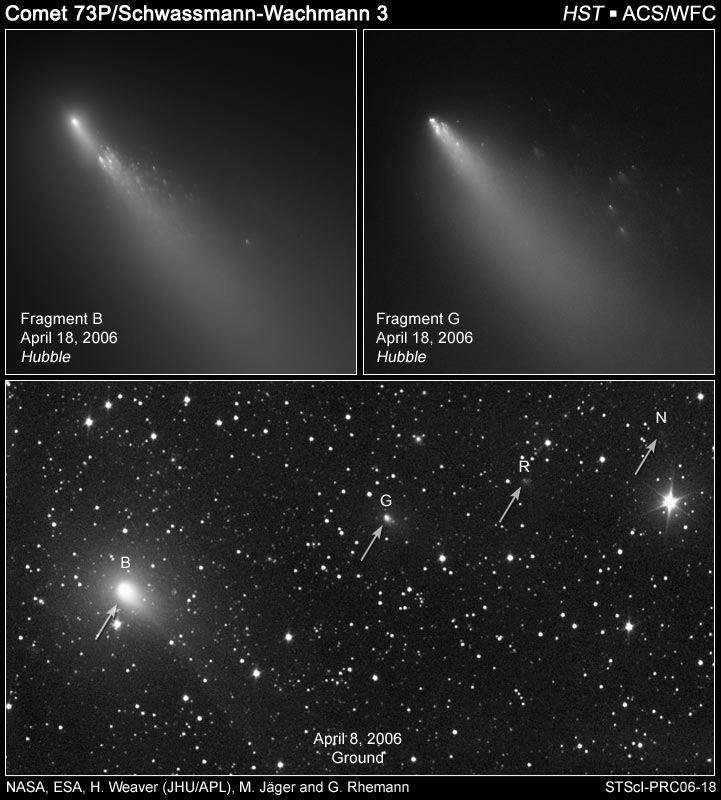Meteor showers are harder to predict than rain showers, and that’s especially true for the one potentially coming up Monday night into early Tuesday morning.
Even casual stargazers probably recognize the names of some of the annual meteor showers, like the Perseids and Leonids. But the tau Herculids?
It turns out, this will be a new meteor shower… if one happens.
We might–or might not–get to see a show as the Earth passes through the debris from the comet 73P/Schwassmann-Wachmann, also known as SW3. Astronomers realized the comet broke apart in 1995, and has continued to shatter since then.
Hubble’s Advanced Camera for Surveys took images of the disintegration of Comet 73P/Schwassmann-Wachmann 3’s fragment B. (NASA, ESA, H. Weaver [APL/JHU], M. Mutchler and Z. Levay [STScI])
“This is going to be an all-or-nothing event. If the debris from SW3 was traveling more than 220 miles per hour when it separated from the comet, we might see a nice meteor shower,” says NASA’s Bill Cooke. If not, then skywatchers will go bust.
Why so much uncertainty? This situation with the comet breaking up isn’t the usual circumstance. That’s why the possibilities range from a total dud with no meteors, to an outburst that produces hundreds of meteors per hour.
According to NASA’s “Watch the Skies” blog, we have some factors in our favor if SW3 does, in fact, produce. First, the radiant (the point where the meteors appear to come from) will be high in the sky at the expected peak around 1 a.m. Eastern Time.
Second, we won’t have to deal with bright moonlight, since the moon will be in the new phase.
Meteors would enter the atmosphere slowly and appear faint. This will make being away from light pollution and giving your eyes plenty of time to adjust to the darkness even more important.
Here’s the cloud forecast for 1 a.m. Eastern Time Monday night/early Tuesday morning. Those under clear skies can try their luck.
Just remember: Keep your expectations low and enjoy the night sky, regardless of what happens. Plus, you still have other celestial sights to check out in the coming months, including more reliable meteor showers.

